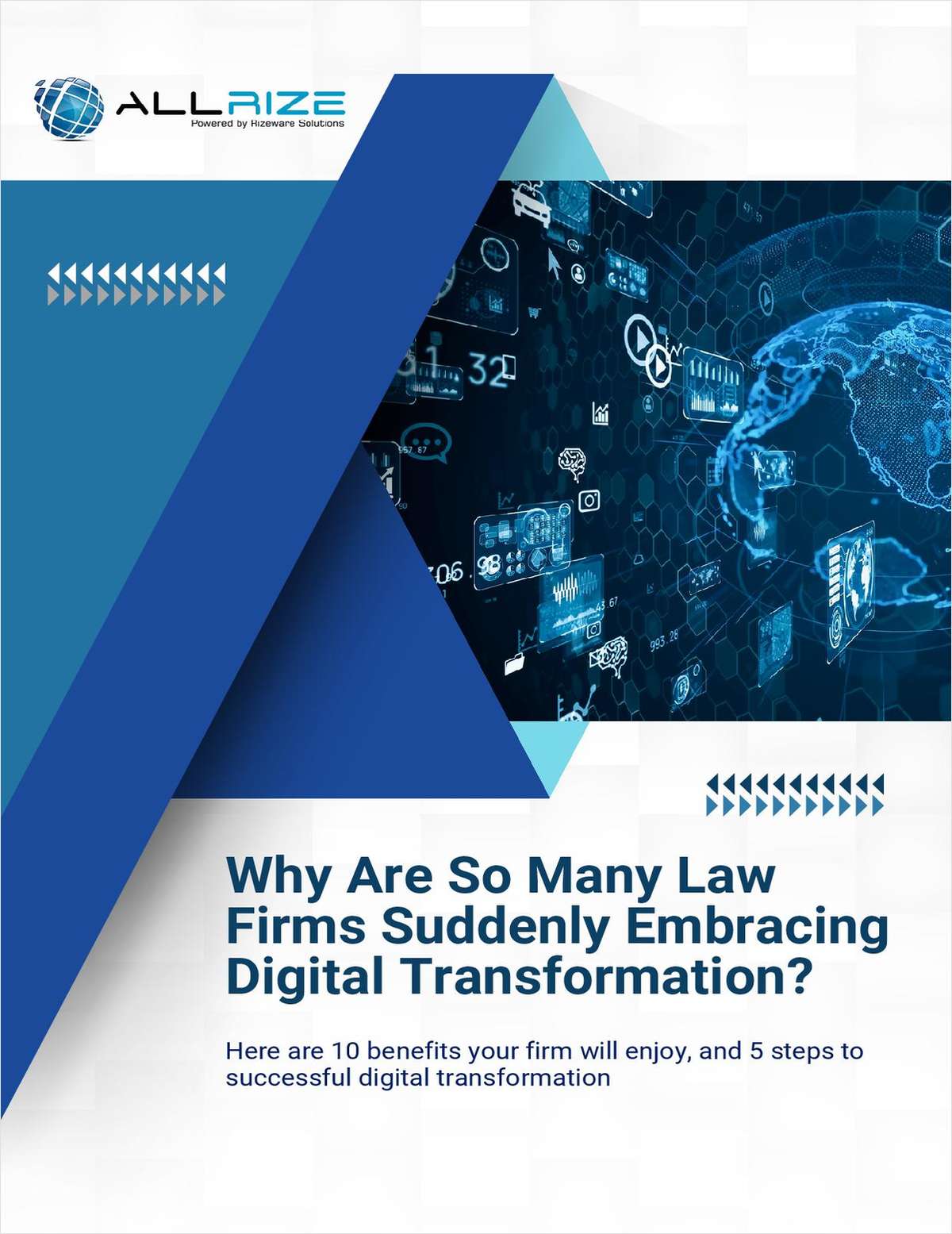Uber's Legal Department Drives Forward Without Travis
Travis Kalanick's unexpectedly swift, full departure from Uber Technologies Inc. as chief executive has punched yet another hole in a company left…
June 23, 2017 at 02:12 PM
5 minute read
The original version of this story was published on Corporate Counsel
Travis Kalanick's unexpectedly swift, full departure from Uber Technologies Inc. as chief executive has punched yet another hole in a company left honeycombed by more than a dozen combined executive exits and vacancies.
It was widely reported Wednesday that Kalanick will leave his CEO post, though he will remain on the company's board of directors.
In the wake of this change, Uber's legal department will have to get answers to several questions, said legal consultants and private-practice attorneys unaffiliated with the San Francisco-based company, which did not respond to request for comment.
These include: Who should the department report to? What recommendations from Covington & Burling, which investigated corporate culture connected to allegations of sexual harassment and discrimination at the company, are immediately actionable? And for the chief legal officer, Salle Yoo, who was recently promoted from GC to CLO, an especially large question remains: Will she be called in as interim CEO in Kalanick's stead?
Not immediately having an interim CEO named by now in a situation like this is unusual, said Kunzler Law Group partner Jon Klassen, who was formerly general counsel at BioMed Realty Trust.
“In my experience, at a public company the board views as one of its primary responsibilities as thinking about succession,” he said. Klassen spoke based on his own experiences, though Uber is a private company. He noted that at BioMed, there was a specific document in place with individuals named to immediately step in as interim leaders if the CEO departed. “But in this case, it's such a mess,” said Klassen. “The CEO was looking to hire another CFO, the GC is now going to be the CLO. It's hard to know what it means.”
Uber has lost scores of executives in 2017, and it has several vacancies to be filled. Open roles include chief operating officer, chief finance officer, senior vice president of engineering, general counsel, chief marketing officer and chief diversity officer. Departures have included the former VP of product and growth, Ed Baker; senior vice president of business, Emil Michael; head of finance, Gautum Gupta; company president, Jeff Jones; SVP of engineering, Amit Singhal; head of the company's autonomous driving division, Anthony Levandowski; and SVP of communications, Rachel Whetstone.
Klassen said if he were Uber's CLO, he would immediately ask the board for direction on what to prioritize and who to report to. Away from the board, he said, he would also review the results of the investigation performed by Covington partners Tammy Albarrán and former U.S. Attorney General Eric Holder, taking action immediately on recommendations that don't need a CEO's input. That includes recommendations such as communicating more closely with the company's human resources department, Klassen said. And he added day-to-day work for the legal department should remain the same.
“Figuring out how to protect the company.” Klassen said. “You can do that without board direction.”
Uber's CLO could also expect to be called on to act as the interim CEO, said Susan Hackett, CEO of consulting firm Legal Executive Leadership. “This could be [a situation] where the board of directors is asking [Yoo] to step in,” Hackett said. “Making sure the line of communications is being driven so that the company will be on the right side of issues, interpreted by someone who understands regulatory risks and the legal environment, that's probably a sound step.”
The move, though uncommon, has been done. In September 2016, American Apparel's then-CEO, Paula Schneider, wrote a letter of resignation to her board, opposing a possible sale of the company. General Counsel Chelsea Grayson, who was hired in 2014, was quickly chosen to fill in. She still holds the CEO title today.
In 2015, when United Airlines CEO Oscar Munoz took sudden medical leave after an unexpected heart attack, general counsel Brett Hart was named acting CEO four days later.
Hackett said Yoo's recent promotion also shows a “vote of confidence” in her work. “That's not something you ask of someone if you're unhappy with their performance,” she said.
Uber did not respond to questions about who Yoo is currently reporting to, if anyone, and if the company has considered giving her a larger role after Kalanick's exit. On June 13, when Kalanick initially told the company he was taking an indefinite leave of absence, he said Uber would be run by his direct reports.
As for Kalanick's exit itself, it probably included very little legal work for either an outside law firm or for in-house counsel, said Hirschfeld Kraemer founding partner Stephen Hirschfeld.
Hirschfeld, who has been involved with conversations at several companies specifically about executive exits, said a chief executive's employment contract often includes a road map for how to treat a departure. That includes deciding whether the executive was fired “with cause” or “without cause” and what kind of payout to deliver, including stock options and bonuses.
He said some companies choose to take the legal work of letting go of the CEO to an outside law firm, simply because it can be a “smarter practice to establish a temporary wall” between the legal department and the chief executive, who may have worked closely together for years. It is not a move made to avoid a conflict of interest, he said.
The entire process of terminating an executive is “relatively simple,” Hirschfeld said.
Copyright Corporate Counsel. All rights reserved. This material may not be published, broadcast, rewritten, or redistributed.
Contact David Ruiz at [email protected].
This content has been archived. It is available through our partners, LexisNexis® and Bloomberg Law.
To view this content, please continue to their sites.
Not a Lexis Subscriber?
Subscribe Now
Not a Bloomberg Law Subscriber?
Subscribe Now
NOT FOR REPRINT
© 2024 ALM Global, LLC, All Rights Reserved. Request academic re-use from www.copyright.com. All other uses, submit a request to [email protected]. For more information visit Asset & Logo Licensing.
You Might Like
View All
Inside Track: Late-Career In-House Leaders Offer Words to Live by

In-House Leaders Trying to Contain Political Divisiveness Face Maze of Challenges
5 minute read
Meta Directors Accused of Deleting Emails Discussing Cambridge Analytica, FTC Settlement
3 minute read
FTC Bans Exec From Chevron Board—Exercising Authority It Doesn't Have, GOP Dissenters Say
5 minute readTrending Stories
Who Got The Work
Dechert partners Andrew J. Levander, Angela M. Liu and Neil A. Steiner have stepped in to defend Arbor Realty Trust and certain executives in a pending securities class action. The complaint, filed July 31 in New York Eastern District Court by Levi & Korsinsky, contends that the defendants concealed a 'toxic' mobile home portfolio, vastly overstated collateral in regards to the company's loans and failed to disclose an investigation of the company by the FBI. The case, assigned to U.S. District Judge Pamela K. Chen, is 1:24-cv-05347, Martin v. Arbor Realty Trust, Inc. et al.
Who Got The Work
Arthur G. Jakoby, Ryan Feeney and Maxim M.L. Nowak from Herrick Feinstein have stepped in to defend Charles Dilluvio and Seacor Capital in a pending securities lawsuit. The complaint, filed Sept. 30 in New York Southern District Court by the Securities and Exchange Commission, accuses the defendants of using consulting agreements, attorney opinion letters and other mechanisms to skirt regulations limiting stock sales by affiliate companies and allowing the defendants to unlawfully profit from sales of Enzolytics stock. The case, assigned to U.S. District Judge Andrew L. Carter Jr., is 1:24-cv-07362, Securities and Exchange Commission v. Zhabilov et al.
Who Got The Work
Clark Hill members Vincent Roskovensky and Kevin B. Watson have entered appearances for Architectural Steel and Associated Products in a pending environmental lawsuit. The complaint, filed Aug. 27 in Pennsylvania Eastern District Court by Brodsky & Smith on behalf of Hung Trinh, accuses the defendant of discharging polluted stormwater from its steel facility without a permit in violation of the Clean Water Act. The case, assigned to U.S. District Judge Gerald J. Pappert, is 2:24-cv-04490, Trinh v. Architectural Steel And Associated Products, Inc.
Who Got The Work
Michael R. Yellin of Cole Schotz has entered an appearance for S2 d/b/a the Shoe Surgeon, Dominic Chambrone a/k/a Dominic Ciambrone and other defendants in a pending trademark infringement lawsuit. The case, filed July 15 in New York Southern District Court by DLA Piper on behalf of Nike, seeks to enjoin Ciambrone and the other defendants in their attempts to build an 'entire multifaceted' retail empire through their unauthorized use of Nike’s trademark rights. The case, assigned to U.S. District Judge Naomi Reice Buchwald, is 1:24-cv-05307, Nike Inc. v. S2, Inc. et al.
Who Got The Work
Sullivan & Cromwell partner Adam S. Paris has entered an appearance for Orthofix Medical in a pending securities class action arising from a proposed acquisition of SeaSpine by Orthofix. The suit, filed Sept. 6 in California Southern District Court, by Girard Sharp and the Hall Firm, contends that the offering materials and related oral communications contained untrue statements of material fact. According to the complaint, the defendants made a series of misrepresentations about Orthofix’s disclosure controls and internal controls over financial reporting and ethical compliance. The case, assigned to U.S. District Judge Linda Lopez, is 3:24-cv-01593, O'Hara v. Orthofix Medical Inc. et al.
Featured Firms
Law Offices of Gary Martin Hays & Associates, P.C.
(470) 294-1674
Law Offices of Mark E. Salomone
(857) 444-6468
Smith & Hassler
(713) 739-1250









